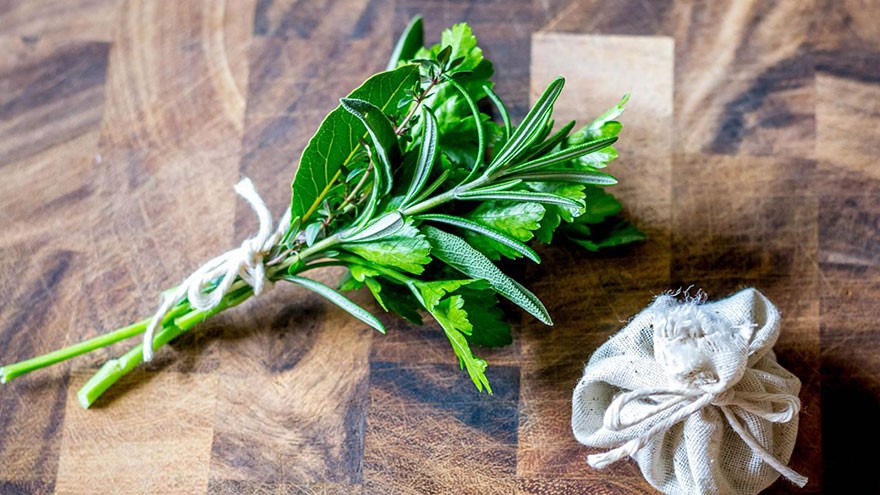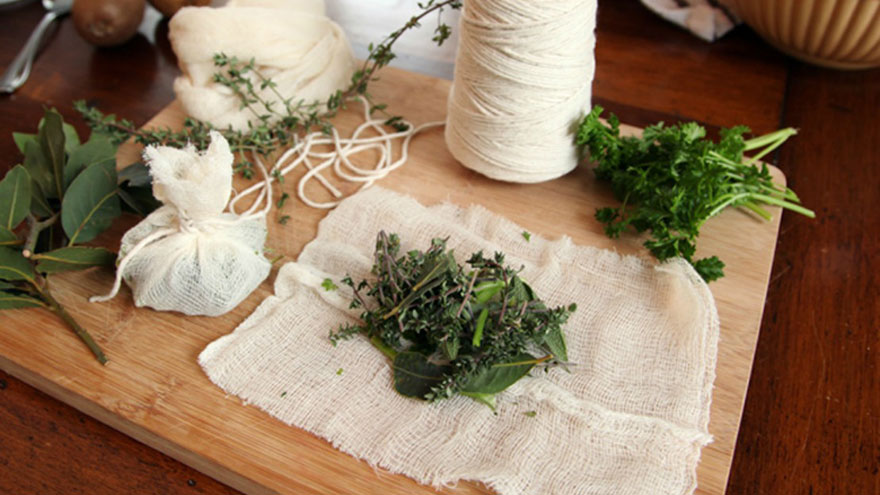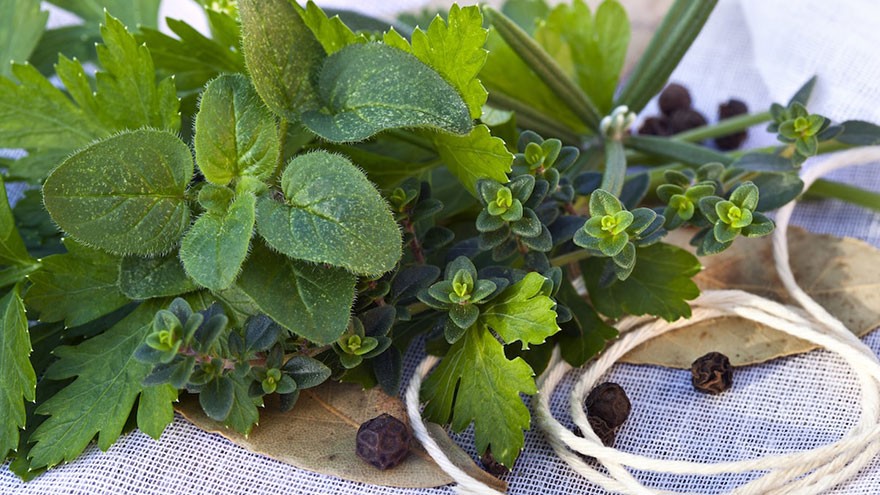How to Make and Use a Bouquet Garni
As aspiring cooks explore the world of gourmet food, one of the terms they’re certain to run across is bouquet garni (boh-kay gar-nee). At its simplest, a bouquet garni is a bunch of herbs tied together and used to flavor the liquid of stews, soups, stocks, and other dishes.
Unlike other forms of traditional herb seasoning, however, the bouquet garni – and consequently the herbs – are removed before the dish is served. Once you’ve tried making a bouquet garni, you’ll discover it’s an easy and highly effective way to add depth of flavor to many dishes.
Tradition
Although it’s likely the bouquet garni was used as far back as the Middle Ages and varied widely in its contents, most chefs will tell you a traditional French bouquet garni uses fresh parsley, and fresh or dried bay leaf, and thyme.
Auguste Escoffier, one of the leaders in bringing French cuisine to the world stage, made his bouquet garni with 8 parts parsley, 1 part bay leaf, and 1 part thyme.
Variations
Today, however, the bouquet garni isn’t so rigidly defined. Any mixture of herbs may be used – usually at least 3 at a time, although 4 or 5 isn’t uncommon, either.
The modern day bouquet garni needn’t be restricted to herbs, either. Some chefs use citrus rind, garlic, peppercorn and vegetables (especially celery leaves or stalks, carrots or carrot greens, and onion).

How to Make a Bouquet Garni
The most traditional way to make a bouquet garni is to tie the herb bunches up with kitchen string.
Alternatively, herbs can be tied up in a piece of cheesecloth; this is also sometimes called a sachet d’Epices (sa-shay duh eh-pie-says) and traditionally holds spices, not just herbs. For this method, cut a piece of cheesecloth into a square measuring about 7 inches across.
Fill the square with herbs and pull up each corner of the cheesecloth. Tie the corners together with string. An easier method is to make or buy an unbleached muslin bag with a drawstring; sometimes these are sold in tea stores.
Yet another alternative is to tie the herbs up in some large herb or vegetable leaves. Leek leaves are common for this purpose, but be as creative as you like. The very first historical mention of the bouquet garni, in 1656, remarks that chef Pierre de Lune placed his herbs (chives, cloves, thyme, parsley, and chervil) in a slice of bacon.

How to Use a Bouquet Garni
Place any type of bouquet garni in the pot when you add the other ingredients. Let it float freely; there’s no need to tie to the pot handle, for example.
When the ingredients are done cooking in the liquid, remove the bouquet garni by lifting it out with a slotted spoon or tongs. Toss the bouquet garni in the trash or compost bin.

Check out the video version of this article on YouTube

